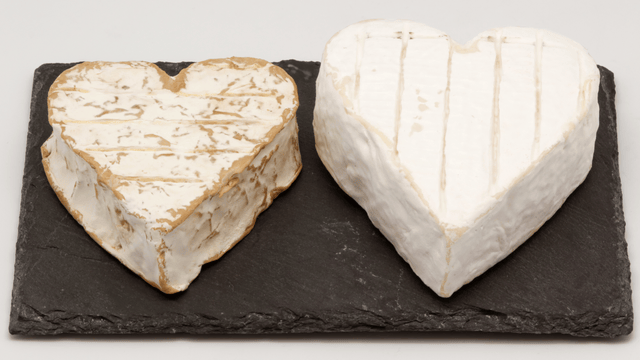Neufchâtel cheese

Neufchâtel cheese

| French Neufchâtel | |
|---|---|
| Country of origin | France |
| Region, town | Normandy, Neufchâtel-en-Bray |
| Source of milk | Cows |
| Pasteurized | No |
| Texture | Soft |
| Aging time | 8–10 weeks |
| Certification | AOC, 1969 |
Neufchâtel (French: [nøʃɑtɛl] (listen)) is a soft, slightly crumbly, mold-ripened cheese made in the Neufchâtel-en-Bray, French region of Normandy. One of the oldest kinds of cheese in France, its production is believed to date back to the 6th century. It looks similar to Camembert, with a dry, white, edible rind, but the taste is saltier and sharper. It has the aroma and taste of mushrooms. Unlike other soft-white-rinded cheeses, Neufchâtel has a grainy texture.[1] It is most usually sold in heart shapes but is also produced in other forms, such as logs and boxes. It is typically matured for 8–10 weeks.
| French Neufchâtel | |
|---|---|
| Country of origin | France |
| Region, town | Normandy, Neufchâtel-en-Bray |
| Source of milk | Cows |
| Pasteurized | No |
| Texture | Soft |
| Aging time | 8–10 weeks |
| Certification | AOC, 1969 |
American Neufchâtel
In 1872, William Lawrence, a New York dairyman of the township of Chester, created the first American cream cheese as the result of adding cream to the recipe for Neufchâtel.[2] This American Neufchâtel is softer than regular cream cheese due to its approximately 33% lower fat and higher moisture content.[3][4] Due to this reduced fat content, it is found in most grocery stores as a reduced-fat option to cream cheese. In the United States, this Neufchâtel is sometimes called farmers' cheese.[5]
See also
Brie